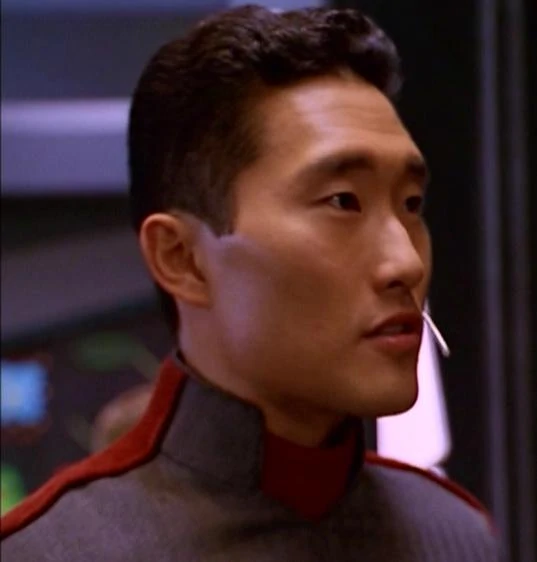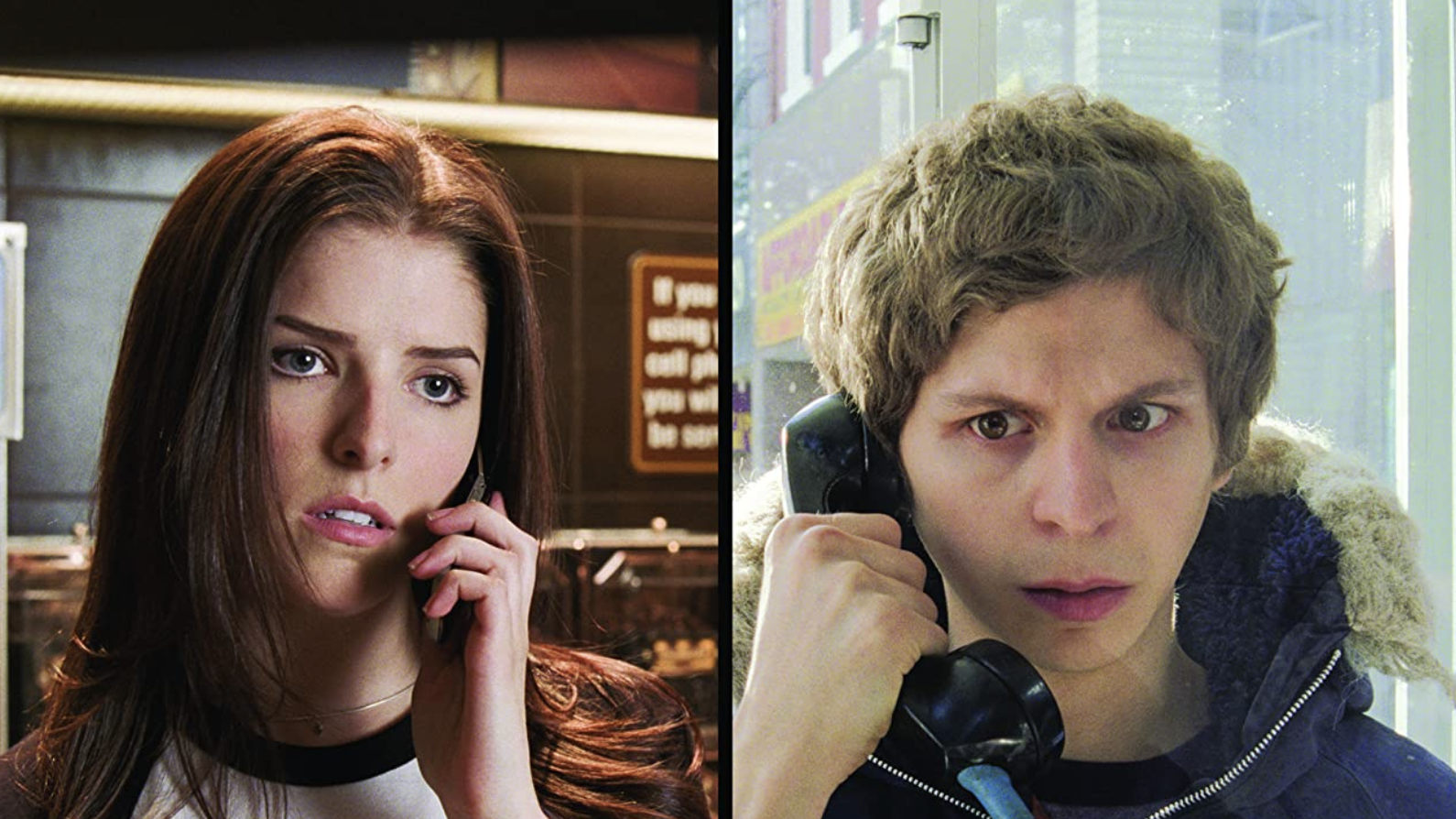Netflix released the original sci-fi movie Stowaway this weekend and I promptly spent one hour and fifty-six minutes of my Saturday night watching it. There’s a bit of a minimalistic art to writing the one-sentence movie summaries that appear in television channel guides and Netflix’s Stowaway website condenses it to “A three-person crew on a mission to Mars faces an impossible choice when an unplanned passenger jeopardizes the lives of everyone on board.” The three-person crew is an A-list of actors: the captain, Toni Collette; the doctor, Anna Kendrick; the botanist, Daniel Dae Kim. The fourth man - the stowaway - is played by Shamier Anderson. Everyone’s acting is top-notch and the characters are all relatable and likable.
Stowaway is near-future science fiction with technology and ships similar to the Martian. On a spectrum where space opera is a one and hard sci-fi is a ten, Stowaway is a seven. The ship is well thought out and logical and the characters operate within the rules and constraints of their environment, but the science is an undercurrent to the morality-driven drama. The film’s structure is more like a one-hour television episode, or perhaps a play, where a small cast is constrained to two or three set locations and faced with a dilemma.
The movie starts with the crew’s launch from Earth, the rocket engines shaking everyone violently with each actor showing how unpleasant the experience is.
It reminds me a bit of Ryan Gosling’s opening space launch sequence in First Man. In First Man, launches are noisy, violent, and terrifying, with the ship’s hull screeching like horror movie screams due to temperatures and stresses.
In Stowaway, the launches aren’t as violent, but they seem unpleasant, and Daniel Dae Kim’s character vomits once they make orbit. The crew of three is on a two-year trip to Mars and become committed after a final acceleration and ship setup.
The plot kicks in when the captain finds an unconscious man in the ceiling. When she opens the panel supporting him, he tumbles out like a body in a horror film, falling on her and breaking her arm. Critically, his fall damages the life support system. After his wounds are treated by the doctor, he awakens to reveal he’s an engineer who became trapped in the ship during ground checks (point of order - he’s not actually a stowaway because stowaways intentionally hide aboard a ship. He’s more of an unintentional passenger). He’s truly in a panic when he discovers that he’s in space, now committed to the same two-year mission as the crew. The crew does a good job of integrating him and making him feel like one of them - they even have him sign the mission plaque - but in the background the captain realizes that four people on a three-man ship with a damaged life-support unit means that no one will live to arrive at Mars in two years.
The setup is familiar in isolation stories. A small group of people, stuck someplace, do not have enough food, water, air or other vital resources for everyone. It’s the triage nightmare that’s always in the back of human thinking: what would I do if there wasn’t enough for everyone? Spaceflight lends itself to this type of story naturally. It immediately reminded me of 2007’s Sunshine, where an accident during a spaceflight to the Sun results in the crew not having enough oxygen for everyone. One person must die to balance the equation. They draw straws at one point to choose their sacrifice. In that movie, they are spared needing to murder a crewmate when the crewmate commits suicide.
2007’s Sunshine - the first half of the movie was pretty good, until it went off the rails at the midpoint and turned into a monster flick
Stowaway has a similar setup where the crew wrestles with the morality of killing the stowaway, offering him a painless way to commit suicide. The story does a good job of having the three main crew members each represent a different point-of-view. All three are aghast at the thought of killing the stowaway, but Anna Kendrick’s doctor is the optimist (save the stowaway at all costs); Toni Collette’s captain is the pragmatist (do what is necessary to save the crew), and Daniel Dae’s botonist is the rationalist (every day they delay the inevitable jeopardizes them all). It is Daniel Dae who hands Shamier the suicide option, going against the will of the crew.
Incidentally, Daniel Dae Kim is no stranger to sci-fi and space stories. You’ll certainly remember him as Jin on Lost.
He also appear both in Star Trek: Voyager and Star Trek: Enterprise. In Voyager, he was an astronaut on a world where time spun faster than the rest of the universe, with Voyager snagged in the world’s orbit in the episode “Blink of An Eye”. Blink of An Eye was an excellent sci-fi story, and I remember his character singing his world’s version of Twinkle Twinkle Little Star, where Voyager was the star.
In Star Trek: Enterprise he was Corporal Chang, one of the MAKOs (Enterprise’s Special Forces).
In the Babylon 5 spinoff, Crusade, he played John Matheson.
I couldn’t find any space shows for Toni Collette or Anna Kendrick, but in the sci-fi/fantasy realm you’ll remember Anna from Scott Pilgrim versus the World.
Stowaway is described as a “sci-fi thriller” but that is a bit of a stretch. It’s more of a sci-fi morality play. The story takes its time following the characters around their daily business and decision-making aboard the ship with extended conversations over algae racks or sitting in front of the cupola while Earth and stars spin outside. A heroic spacewalk scene in the last act is interesting, but not thrilling. Although it is a life-or-death situation, the tension feels numb in the dreamy slow-motion weightless of space, and the inevitability of the movie’s realistic logic means we have low-expectations for that mission’s success.
Overall, I liked Stowaway. I have a special fondness for intelligent sci-fi that takes its time and has environments that feel authentic. One of my criticisms is that the story didn’t develop its characters very much. We know very little about each of the crew other than their titles and dominant personality trait (“doctor/empathy”). The extended conversations over algae were often about superficial topics, such as why Daniel Dae’s character likes jazz, and it feels like a missed opportunity for back story. The only character who has any backstory is the stowaway (he cares for his younger sister and is stressed that he’s cut off from her in space). The other criticism is that it is, perhaps, too logical. The situation matter-of-factly gives the characters the grim news and then puts them on rails. In real life, we’re served up impossible situations and we’re sourly stuck with the outcomes. In stories, though, we like to see perseverance. In stories like the Martian, the lead character is served with an unsurvivable scenario and we enjoy watching him think his way out of the impossible. The Martian would not have been a good story had Watney slowly starved to death, the film ending with a panning shot of his slumped body at his desk. It would have been logical, but not cinematic. I will also say that for a story locked into its own logic, the setup of how and why the stowaway is trapped in the ceiling isn’t really explained other than an accident occurred during ground checks, and the movie rolls forward with some brief hand-waving.
So, if you enjoy movies like Gravity, the Martian, or even 2001: A Space Odyssey, check out Stowaway. It’s not a bad way to spend two hours on a Saturday night.









